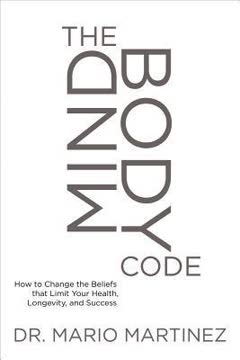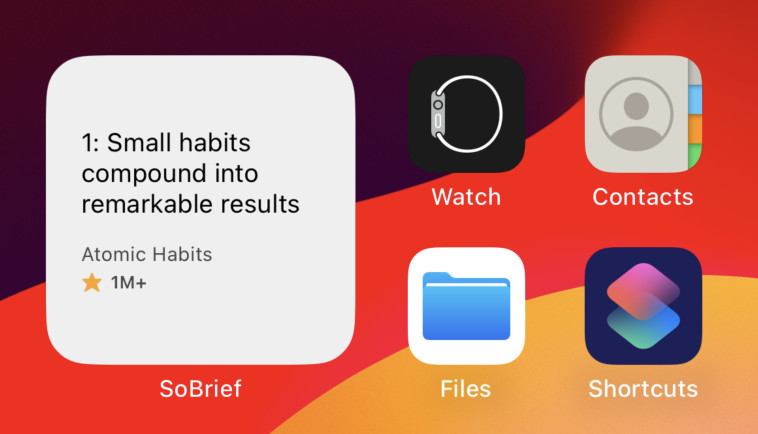Key Takeaways
1. Our cultural beliefs shape our health, happiness, and longevity
Growing older is inevitable, aging is optional.
Cultural programming: Our perceptions, health, and longevity are significantly influenced by the cultural beliefs we embody. These beliefs, often instilled by "cultural editors" (authority figures in our lives), can either limit or expand our potential for wellness and happiness.
Biocognitive theory: Dr. Martinez's biocognitive model proposes that mind, body, and culture are inseparable components of human experience. This theory challenges conventional views by suggesting that our cultural beliefs can have a greater impact on our health than our genetic makeup.
Key concepts:
- Cultural portals: Age-related expectations that can limit our potential
- Bioinformational fields: How we interpret and embody cultural information
- Mindbody code: The set of "operating instructions" we embody from our culture
2. Archetypal wounds can be healed through specific healing fields
Commitment heals abandonment, honor heals shame, and loyalty heals betrayal.
Understanding archetypal wounds: All cultures inflict three main types of emotional wounds: abandonment, shame, and betrayal. These wounds, often caused by significant people in our lives, can profoundly impact our self-worth and ability to form healthy relationships.
Healing process: Each archetypal wound has a corresponding healing field that can be accessed to resolve the wound and regain empowerment. This process involves:
- Identifying the wound and its cultural editors
- Embodying memories of the wound
- Untangling the wound from our intimate language of love
- Accessing memories of elevated cognitions and exalted emotions
- Mourning our known misery
- Embodying the healing fields
- Evaluating our relationships with current coauthors
Healing fields:
- Commitment for abandonment
- Honor for shame
- Loyalty for betrayal
3. The immune system has a moral code and responds to our beliefs
Does the immune system have morals?
Biocognitive immune system: Dr. Martinez proposes that the immune system does more than protect us from pathogens; it confirms the cultural beliefs we embody. This model explains why our thoughts and emotions can significantly affect our physical health.
Exalted emotions and elevated cognitions: These positive mental states, such as compassion, empathy, honor, and loyalty, can enhance immune function and promote overall health. Conversely, primitive emotions based on fear can negatively impact our immune system.
Key findings:
- Immune system responds to positive emotions unrelated to fighting pathogens
- Cultural beliefs can influence biological responses (e.g., nocebo effect)
- Contextual relevance determines immune system action, not just self/non-self recognition
4. Guardians of the heart create deep, loving relationships
Horizontal love remains superficial. Vertical love goes deep.
Guardianship in relationships: This concept involves creating a covenant of safety that promotes mutual emotional healing and resolves the fear of being wounded again. It's about communicating love without the obstruction of archetypal wounds.
Vertical love: Unlike horizontal love, which seeks quantity and remains emotionally shallow, vertical love seeks quality and emotional depth. Vertical lovers sustain passion even as the body ages and maintain faith during challenging times.
Three stages of vertical love:
- Attraction: Building friendship and curiosity
- Engagement: Exploring compatibility in worldviews
- Embracement: Creating a new subculture based on the best of both partners' histories
5. Centenarians teach us valuable lessons about healthy longevity
Most suffering is a direct or indirect result of mindlessness.
Centenarian mindfulness: Dr. Martinez's research with healthy centenarians across cultures revealed common traits and beliefs that contribute to their longevity. These individuals defy cultural portals and stereotypes of aging, maintaining a youthful mindset and engagement with life.
Four commitments for centenarian mindfulness:
- Growing older is the passing of time; aging is what we do with time based on cultural beliefs
- The present moment is never too late to make commitments
- Illnesses are learned; the causes of health are inherited
- Forgiveness is a liberating act of self-love
- Key attributes: Resilience, perseverance, creativity, and flexibility
6. Overcoming abundance phobia is key to reclaiming our birthright
Abundance is the waves of joy you can experience while sailing an imperfect ocean.
Understanding abundance phobia: Many people unconsciously fear success and abundance due to cultural programming that sets limits on acceptable achievements. This fear can lead to self-sabotage and difficulty in accepting good fortune.
Building self-worth: To overcome abundance phobia, we must cultivate a strong sense of self-worth. This involves working on three components of self-esteem:
- Valuation: How much joy we can experience from positive deeds and circumstances
- Competence: How well we perform in various aspects of life
- Affiliation: The quality of our relationships and who we include in our joy
Practical steps:
- Identify and challenge limiting cultural beliefs
- Recontextualize the felt meaning of unworthiness
- Celebrate small successes and practice gratitude
7. Forgiveness is a liberating act of self-love, not about the perpetrator
Forgiveness is a liberation from the personal enslavement you construct when a misdeed is perpetrated against you.
Biocognitive forgiveness: This process is about reclaiming the empowerment and self-worthiness we thought had been taken from us, rather than absolving the perpetrator. It involves recognizing that we inadvertently offer ownership of our empowerment to the perpetrator when we're wounded.
The forgiveness process:
- Alpha event: Recognizing our goodness through memories of honor, commitment, and loyalty
- Omega event: Feeling grateful for recognizing our empowering deeds
Key points:
- Forgiveness doesn't require reconciliation or redemption of the perpetrator
- The process works without engaging the perpetrator at all
- It's an act of self-love that allows us to regain hidden empowerment and worthiness
8. Psychospiritual conflicts can mimic psychiatric disorders
Independent of your belief in an afterlife, you must decide if you are going to base your existence on love or fear.
Understanding psychospiritual conflicts: These conflicts arise when our spiritual or religious beliefs clash with our experiences or actions, potentially manifesting as symptoms that resemble psychiatric disorders.
Four stages of change:
- Behavior change
- Meaning change
- Confronting coauthors and environments
- Spiritual resolution
Contemplative psychology: This emerging field brings together Western and Eastern mystical-theology models to explore how spiritual beliefs affect physical and mental health. It offers tools to resolve psychospiritual conflicts and access deeper levels of consciousness.
Key concepts:
- Apophasis: Negating distractions to reach non-contextual meaning
- Aphaeresis: Letting go of blocks to deeper understanding
- Aporia: Navigating the experiential vacuum created by removing blocks
9. Sustainable change requires more than wishful thinking
Change is difficult to implement. This is because it will be challenged every step of the way by your own fears and by the cultural editors who have coauthored your present life.
Beyond positive thinking: While good intentions are necessary, they're not sufficient for lasting change. We must engage the fullness of the mindbody code to effect real transformation.
Failure and success archetypes:
- Failure archetypes: Procrastination, cynicism, pessimism, and unworthiness
- Success archetypes: Commitment, trust, faith, and worthiness
Internal guides for navigating turbulence:
- Courage: To overcome fear-based conditions
- Patience: To address haste, toxic anger, and arrogance
- Faith: To combat cynicism, pessimism, and negativity
Practical steps:
- Identify areas of disharmony in bonding and limit-setting
- Choose appropriate causes of health (elevated cognitions and exalted emotions)
- Apply internal guides to confront challenges
10. The drift offers portals to synchronicity and meaningful coincidences
Synchronicity is a frequent occurrence readily available to you in the discovery mode.
Understanding the drift: This concept refers to portals of synchronicity that offer pathways to meaningful coincidences and interconnectedness. It requires suspending predictability and embracing discovery.
Navigating the drift:
- Identify out-of-order events as potential portals
- Observe coincidental signals
- Find wisdom in obstructions
- Discover past and future interconnectedness
- Be open to epiphanies
- Commit to feedforward celebrations
Key tools:
- Feedforward: Celebrating future events in the present
- Prolepsis: Accessing wisdom before its historical time
- Apophatic inquiry: Reaching non-contextual meaning through negation
11. Creating subcultures of wellness supports emotional growth
Subcultures of wellness are those that explore all the ways individual excellence can contribute to collective abundance.
Beyond tribal limitations: To achieve sustainable change, we need cultural support that goes beyond the constraints of our original tribes. Subcultures of wellness offer opportunities to share excellence without fear of banishment and relinquish legacies of unworthiness.
Characteristics of wellness subcultures:
- Celebrate individual achievements without envy
- Replace fear-based emotions with empathic joy
- Support personal growth and exploration beyond cultural "pales"
Steps to create wellness subcultures:
- Identify and challenge limiting tribal beliefs
- Find mentors who support your growth
- Practice setting healthy boundaries
- Cultivate relationships that enhance worthiness
12. Accessing the mindbody causes of health promotes overall well-being
Our elevated cognitions and exalted emotions are the causes of our health.
Mindbody causes of health: Dr. Martinez proposes that we inherit causes of health rather than illness. These include elevated cognitions (e.g., honor, commitment, loyalty) and exalted emotions (e.g., compassion, empathy, gratitude) that create optimal conditions for mind-body wellness.
Accessing causes of health:
- Identify areas of disharmony in bonding and limit-setting
- Choose appropriate causes of health for the situation
- Apply internal guides (courage, patience, faith) to navigate challenges
- Practice inclusivity by extending causes of health to yourself and others
Benefits:
- Enhanced immune function
- Improved social connections
- Greater resilience in facing life's challenges
- Overall increase in physical and emotional well-being
By understanding and applying these key takeaways from Dr. Martinez's biocognitive theory, readers can begin to transform their lives, improve their health and relationships, and access deeper levels of personal growth and well-being.
Last updated:
FAQ
What is The MindBody Code by Mario Martinez about?
- Core premise: The MindBody Code explores how cultural beliefs, mind, and body coemerge to shape health, longevity, and success, introducing the concept of biocognition.
- Biocognitive model: Martinez proposes that mind, body, and culture are inseparable, and that changing limiting beliefs embedded in our cultural mindbody code can lead to profound healing.
- Practical journey: The book offers experiential methods and a new language to help readers identify and shift limiting patterns for sustainable transformation.
Why should I read The MindBody Code by Mario Martinez?
- Scientific foundation: The book synthesizes psychoneuroimmunology, cultural neuroscience, and contemplative psychology, providing evidence that beliefs and culture influence immune function and health.
- Empowerment and hope: Martinez empowers readers to reclaim abundance in health, wealth, and love by overcoming cultural ceilings and self-sabotage.
- Practical transformation: The MindBody Code offers experiential tools and contemplative methods for lasting change, rather than quick-fix solutions.
What are the key takeaways from The MindBody Code by Mario Martinez?
- Mindbody unity: Health and wellness are shaped by the inseparable interaction of mind, body, and culture.
- Archetypal wounds and healing: Healing requires identifying and transforming core wounds (abandonment, shame, betrayal) through their antidotes (commitment, honor, loyalty).
- Cultural influence: Cultural beliefs and rituals profoundly affect aging, immune function, and self-worth.
- Experiential change: Sustainable transformation comes from embodying new beliefs, not just intellectual understanding.
What is biocognition according to The MindBody Code by Mario Martinez?
- Definition: Biocognition is the inseparable coemergence of mind and body shaped by cultural history, challenging reductionist views of health.
- Health implications: Beliefs and emotions directly influence immune function and overall wellness, with elevated cognitions and exalted emotions as causes of health.
- Healing approach: Healing involves unlearning dysfunctional mindbody patterns and recontextualizing beliefs to create a new operative consciousness.
How does The MindBody Code by Mario Martinez explain the influence of culture on health and aging?
- Cultural portals: Cultural beliefs create “portals” that define how we interpret aging, illness, and wellness, influencing biological processes.
- Cultural neuroscience: Brain function and perception are shaped by cultural context, affecting how we age and experience health.
- Centenarian studies: Centenarians defy cultural limitations by adopting resilient beliefs and rituals that foster longevity and vitality.
What are the archetypal wounds and healing fields in The MindBody Code by Mario Martinez?
- Three core wounds: The book identifies abandonment, shame, and betrayal as universal wounds inflicted by cultural editors.
- Healing fields: Commitment heals abandonment, honor heals shame, and loyalty heals betrayal; embodying these fields restores empowerment and self-worth.
- Experiential healing: Healing is achieved through contemplative methods that recontextualize the felt meaning of wounds, not just through intellectual reasoning.
What are the five portals of wellness in The MindBody Code by Mario Martinez?
- Portals defined: The five portals are safety, love, expression, peace, and spirit, each representing a biosymbolic area of mindbody wellness.
- Integration of meaning: These portals integrate cultural meaning and biological expression, serving as gates for total well-being.
- Practical exercises: The book provides mantras and rituals to explore and strengthen these portals, helping readers access innate causes of health.
How does The MindBody Code by Mario Martinez address the role of cultural editors and tribal influences on self-worth?
- Cultural editors: Authority figures like parents, teachers, and religious leaders shape identity and self-worth, often teaching limiting beliefs.
- Tribal boundaries: Societal “pales” protect but also constrain individual excellence, promoting dependence and learned helplessness.
- Breaking free: Martinez guides readers to recognize and unmask these controls, create subcultures of wellness, and coauthor supportive environments.
How does The MindBody Code by Mario Martinez explain the immune system’s “moral code”?
- Beyond defense: The immune system responds to contextual relevance and operational consciousness, not just self vs. nonself.
- Emotional impact: Exalted emotions like love and compassion enhance immune function, while fear and shame impair it.
- Cultural modulation: Beliefs and language can trigger immune responses, showing that immune function is shaped by cultural context.
What practical tools and exercises does The MindBody Code by Mario Martinez offer for sustainable change?
- Stages of change: The book outlines four stages—behavioral, meaning, confronting coauthors, and spiritual resolution—emphasizing self-worth for lasting transformation.
- Contemplative methods: Exercises like witnessing, embodied release, and contemplative inquiry help embody healing fields and recontextualize beliefs.
- Internal compass: Readers are taught to use patience, courage, and faith as internal guides to navigate challenges and restore mindbody harmony.
How does The MindBody Code by Mario Martinez address forgiveness and its role in healing?
- Forgiveness as liberation: Forgiveness is about regaining empowerment and worthiness, not necessarily reconciling with the perpetrator.
- Alpha and omega events: The process involves recognizing one’s goodness (alpha) and feeling gratitude to recover worthiness (omega).
- Embodied process: Forgiveness is a mindbody experience requiring embodied recognition of healing fields, independent of intellectual reasoning.
What is the concept of the drift and synchronicity in The MindBody Code by Mario Martinez?
- The drift defined: The drift refers to nonlinear, synchronistic pathways and meaningful coincidences that can transform life.
- Navigational tools: Martinez introduces tools like feedforward, apophatic inquiry, and prolepsis to engage with the drift and embrace uncertainty.
- Practical application: By shifting from linear to nonlinear perception, readers can access creativity, wisdom, and novelty, enhancing their wellness journey.
Review Summary
The Mindbody Code receives mostly positive reviews, with an average rating of 4.18 out of 5. Readers appreciate its insightful approach to mind-body connections and cultural influences on health. Many find it thought-provoking and empowering, offering unique perspectives on healing and personal growth. Some reviewers note the book's challenging vocabulary and concepts, suggesting it requires careful study. While a few readers struggled to engage with the content, most recommend it as a valuable resource for understanding the relationship between beliefs, health, and well-being.
Similar Books
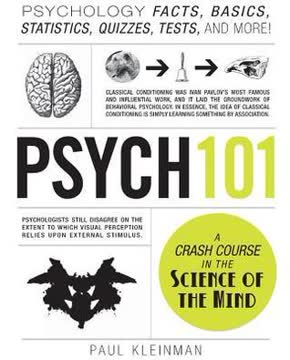

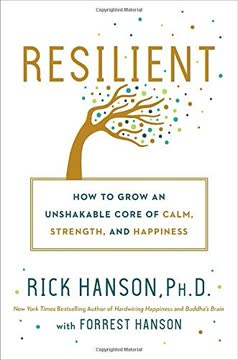
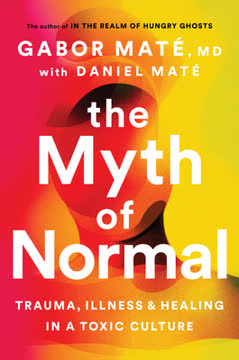
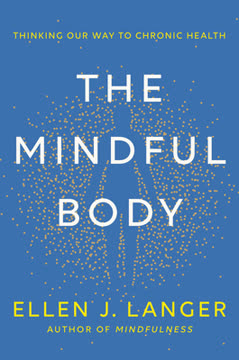
Download PDF
Download EPUB
.epub digital book format is ideal for reading ebooks on phones, tablets, and e-readers.
